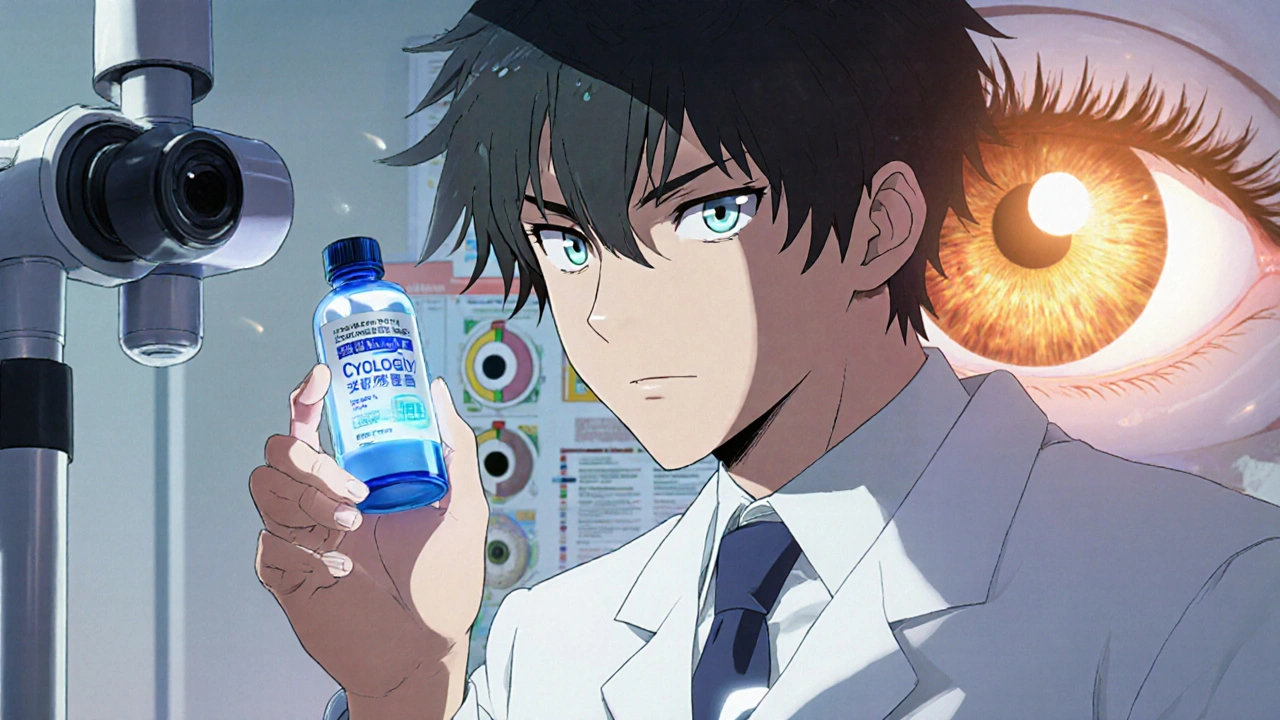Cyclogyl: What It Is, How It Works, and What Alternatives Exist
When your eye doctor needs to see deep into your eye, they use a drop called Cyclogyl, a prescription eye drop containing cyclopentolate, used to temporarily dilate the pupil and relax the eye’s focusing muscle. Also known as cyclopentolate hydrochloride, it’s one of the most common tools in eye exams, especially for kids and patients with complex vision issues. Unlike regular reading glasses or contact lenses, Cyclogyl doesn’t correct your vision — it lets the doctor see what’s going on behind the iris. It’s not a treatment for disease, but a diagnostic aid. You’ll feel blurry vision and light sensitivity for hours after use, which is normal and expected.
Cyclogyl is often compared to other pupil-dilating drops like Tropicamide, a shorter-acting alternative used in routine eye exams and Phenylephrine, a vasoconstrictor often paired with cyclopentolate for stronger dilation. While Tropicamide wears off in 4–6 hours, Cyclogyl can last up to 24 hours, making it ideal for detailed retinal exams or pediatric assessments where cooperation is limited. It’s also used before certain eye surgeries or to treat inflammation like uveitis by keeping the pupil still. The choice between these drops depends on how long the doctor needs the pupil open and the patient’s age or medical history.
People often ask if there’s a generic version of Cyclogyl — yes, it’s just called cyclopentolate. The brand name doesn’t change how it works. Some patients get confused when they’re given Cyclogyl after a routine check-up and wonder why their vision is so blurry. That’s because it’s not meant for daily use. It’s a short-term tool. You won’t find it on pharmacy shelves without a prescription. And while it’s generally safe, side effects like dry mouth, dizziness, or rapid heartbeat can happen, especially in young children or older adults with heart conditions. Always follow your doctor’s instructions.
What you’ll find in the posts below is a collection of real-world comparisons — like how Cyclogyl stacks up against other eye dilation methods, when doctors pick one over another, and what patients actually experience after use. You’ll also see how these drops fit into broader eye care, from pediatric exams to managing chronic conditions. No fluff. Just clear, practical info from people who’ve been through it.
Cyclogyl vs Other Mydriatic Eye Drops: Full Comparison
A detailed comparison of Cyclogyl with Tropicamide, Phenylephrine, Atropine, and combo drops, covering speed, duration, side effects, costs and best-use scenarios.

